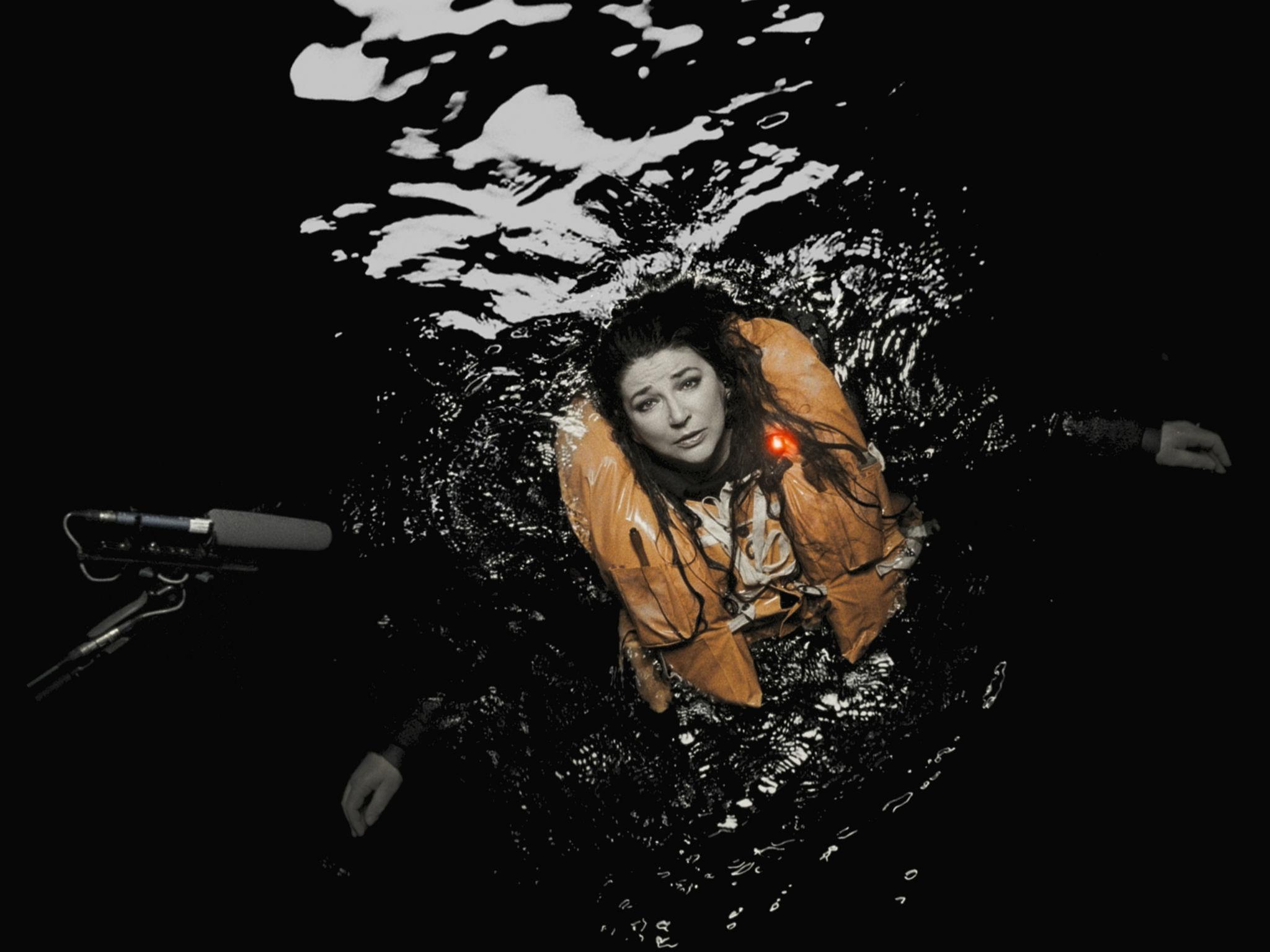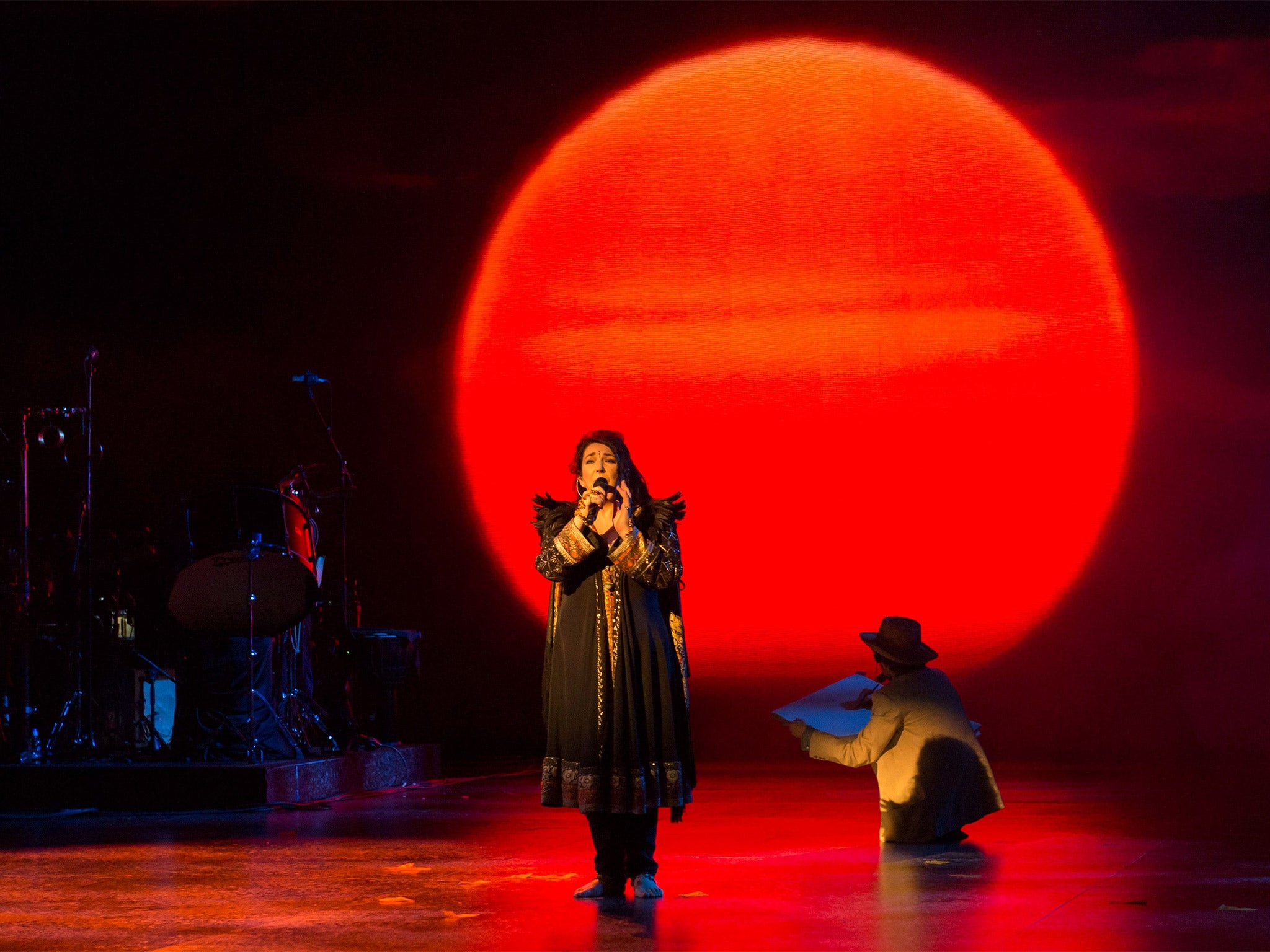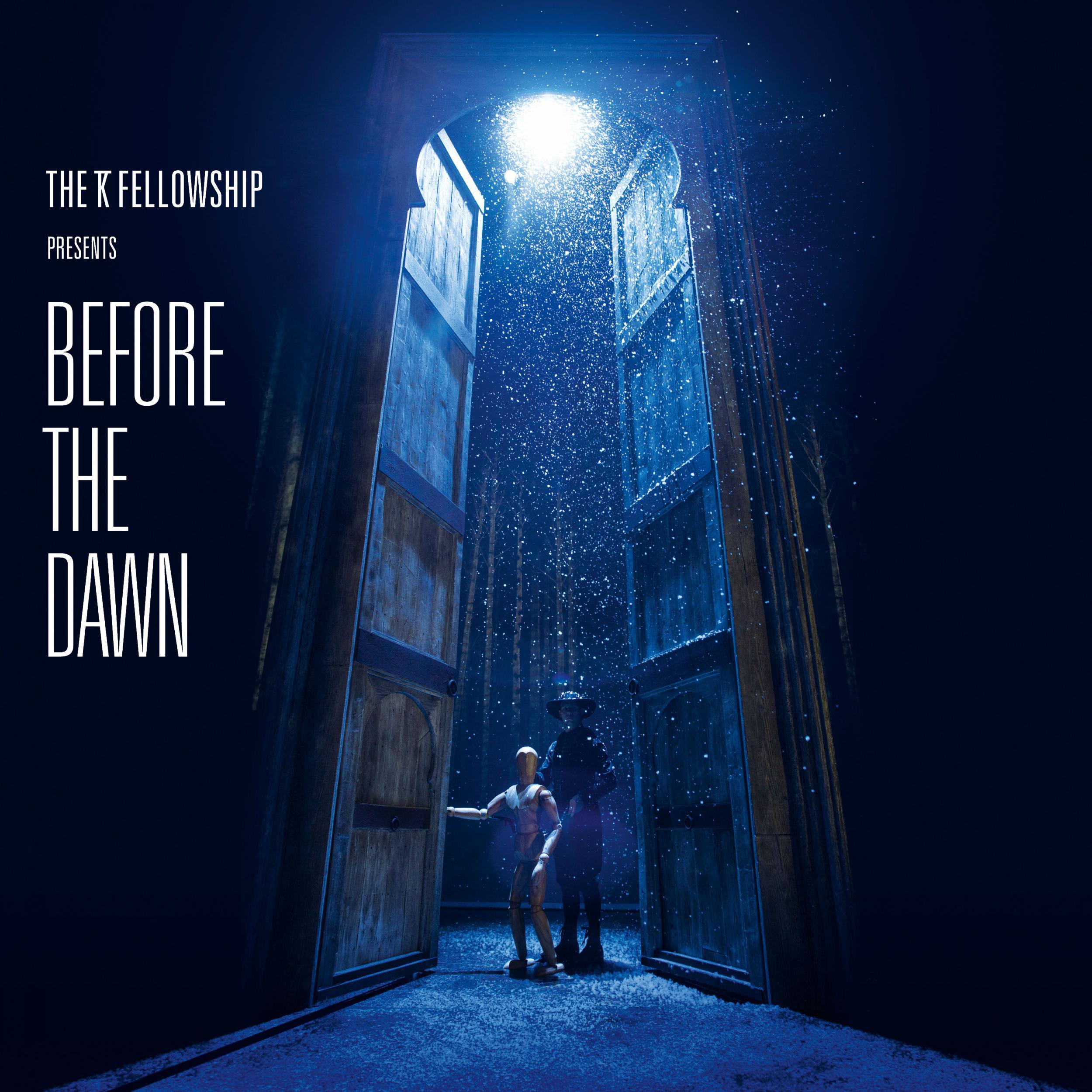Kate Bush exclusive interview: 'I'm not sure you’re ever really happy with what you create'
In a rare interview, the reclusive ‘Wuthering Heights’ singer opens up about her nerves performing live and working with her son on the spectacular visuals for her 2014 shows, which are now commemorated on the live album ‘Before The Dawn’

Kate Bush and I are chatting about girls. I’m telling her about my new favourite group Let’s Eat Grandma, two 17-year-old girls from Norwich blessed with an exploratory interest in spooky, unusual music. They may not be the only ones, Kate suggests. “I heard this thing where they were saying that young girls are very influential in how language is taken forward,” she says. “They tend to lead the way with new phrases and slang terms.”
It wasn’t always the case. For decades, girls were effectively second-class citizens of the pop subculture, shadowy companions of ebullient male partners, until things changed towards the end of the Seventies. Punk was one liberation, but in another direction, Kate Bush herself freed female pop from its largely tear-stained, lovelorn constraints, by singing about things like art, philosophy and death, and by giving voice to a huge array of characters beyond the natural worldview of teenage girls.
She certainly brought new language to pop, and has continued to do so throughout her career – one thinks of the inventive feat of her (literal) 50 Words For Snow, and of her musical realisation of 'Pi' to 80 places. And not just human language, either. On Before The Dawn, the new 3CD live album of her extraordinary shows of 2014, there’s a passage in the suite A Sky Of Honey, from 2005’s Aerial, where she imitates the frolicsome chatter of birds.

“I’ve always loved birdsong,” says Kate, “and I suppose that was the starting point for that piece on the record, speculation about whether it’s a language. The key idea was this connection between birdsong and light, that singing seems to be triggered by the breaking of light, and in the absence of light, they stop singing.” She pauses. “Though there’s a few exceptions – nightjars, reed warblers, blackbirds. And of course, the owl!”
In that suite, an artist appreciates the changing light from sunrise through sunset into night, a progress musically evoked in green and golden tones and timbres. It’s balanced in the show by another suite, The Ninth Wave, from 1985’s Hounds of Love, which presents the drifting ruminations of a woman slowly drowning, alone in the ocean at night. The extraordinary staging for the work involved the skeleton ribs of a boat’s hull, a floating buoy, a helicopter, and a Caligari-esque room of odd angularity, while a huge back-projection of a life-jacketed, singing Kate presented her and her crew with one of the production’s more difficult challenges.
“We shot it in a deep water tank at Pinewood Studios,” she explains. “I’d never worked in water before, and we didn’t know, purely from a technical point of view, if we could find a microphone that could cope with being submerged. So a lot of research went into that. Also, lying on your back, it’s a different way to sing, and we weren’t sure we were going to achieve what we wanted, certainly from an audio point of view. What was probably most difficult, particularly on the first day, was that I was in the tank of water for so long that I actually got really cold. Hour by hour, it was becoming more realistic!”
It’s a measure of the dedication with which she approached the project, and of the degree of logistical control she exercised over proceedings.
“The big thing for me, and it has been from quite early on, is to retain creative control over what I’m doing,” says Bush. “If you have creative control, it’s personal. What I didn’t want to do was step into someone else’s show. Also, that was what was exciting for me, the idea of putting this big visual piece together. Though there was the most extraordinary team of people working on the show: there wasn’t a single person on that team that didn’t have very important input on what the show became.”
This includes people like novelist David Mitchell, who wrote the dialogue for some scenes, and her son, Albert McIntosh, who not only acts and sings in the show, but was crucial to its conception and realisation.
Enjoy unlimited access to 100 million ad-free songs and podcasts with Amazon Music
Sign up now for a 30-day free trial. Terms apply.
ADVERTISEMENT. If you sign up to this service we will earn commission. This revenue helps to fund journalism across The Independent.
Enjoy unlimited access to 100 million ad-free songs and podcasts with Amazon Music
Sign up now for a 30-day free trial. Terms apply.
ADVERTISEMENT. If you sign up to this service we will earn commission. This revenue helps to fund journalism across The Independent.
“Bertie’s input was absolutely huge on this show,” she says. “His input of ideas was very creative and intelligent, he was a large part, creatively, of the show. I would run all my ideas past him. For instance, I had this idea to have this helicopter flying over the audience, and he said, ‘Maybe it could be more abstract, maybe it should just be a light’, and I thought, ‘Oh yes, that’s so much better’, and from there we took the design further with the lighting designer.”
As writer, producer, star and director of the show, Kate was often required to wear different hats, figuratively; during rehearsals, she would sometimes sit out in the stalls, checking the production worked, while one of her keyboardists stood in for her on vocals.
“Sometimes it was frustrating for some of the band, but I genuinely had to spend a lot of time out in the stalls, watching it, so I could check it all works,” she says. “It was like putting a huge jigsaw puzzle together, and it took a long time to get it all put in place. It was probably about 14 months from deciding to do it, to the first night.”

She was helped, as director, by her experience making videos and short films, an interest which effectively supplanted her interest in live performance. Despite being one of pop’s more naturally gifted and inventive stage performers, Kate had not done live shows since her initial tour in 1979, a hiatus that led to her reputation as something of a recluse.
“It wasn’t designed that way, because I really enjoyed the first set of shows we did,” she says. “The plan at the time was that I was going to do another two albums’ worth of fresh material, and then do another show. But of course, by the time I got to the end of what was The Dreaming album, it had gone off on a slight tilt, because I’d become so much more involved in the recording process. And also, every time I finish an album, I go into visual projects, and even if they’re quite short pieces, they’re still a huge amount of work to put together. So I started to veer away from the thing of being a live performing artist, to one of being a recording artist with attached visuals.”
It must have been quite difficult, then, to return to live performance after such a time away from the stage?
“Yes, I was very nervous,” she says. “I wasn’t sure if I would be any good, that was my concern. I knew that I would enjoy putting the show together – in a lot of ways, I approached it as if I was making a really long video, because a lot of my visual work is quite theatrical, so this theatrical work would be quite filmic, it would be a natural progression. But I was very nervous about going onstage and performing. But the response was just beyond anything I could have wished for, every night, the audiences were so excited and so responsive.”
The initial impetus for the show, she explains, came from the balance between the two suites.
“What made it an interesting project for me was that there were these two narrative pieces, very much in opposition to each other, and that would allow me to create a piece of theatre, rather than just be a concert with added theatrics. And I felt they were so contrasting: one is full of deep, dark water, and the other one is full of golden light.
As the project gathered momentum, a sort of collective energy seemed to carry it along, as if, she suggests, “it was really like it wanted to happen”, including spooky coincidences like that involving magician Paul Kieve, hired to create onstage illusions for the show. When contacted, he told Kate he’d met her 30 years earlier at a book signing, where he’d given her a book about magic.
“When I put the phone down, I went to the bookshelf, and went straight to this book,” says Kate. I took it to the next meeting, when he was there, and when there was a convenient pause, I pulled out the book, in which he’d written his name and address inside the front cover. The look of disbelief on his face! It’s not often you can pull a magic trick on a magician!”
The shows, of course, were a huge success, and fans – especially those unable to acquire tickets – keenly awaited the release of some visual record. But sadly, there are no such plans beyond the new CD package.
“People are surprised that there’s no DVD of the show,” says Kate, “but I’d like to mention this live album that Elton John put out, 17-11-70, which was something that I loved so much. To have an album where you could imagine what the show was, I found that incredibly exciting, and in a way, this live album is almost more representative of what it was like to be at the live show.”

It certainly affords an opportunity to examine the ways in which tracks have been expanded, or in some cases have had completely new sections inserted, bringing the work more fully to life. It’s not the first time Bush has re-worked her own material: her Director’s Cut album featured revisions of old tracks she felt could be improved – as in the case of “The Sensual World”, finally getting permission to use Molly Bloom’s soliloquy from James Joyce’s Ulysses.
“I really like the idea of work being allowed to continually evolve,” she says. “I’m not sure you’re ever really happy with something you create, you try and do your best, and there’s always certain constraints, whether it’s energy or whatever, but you can only do your best at the time. I just think it’s really great to have situations where you can open it up again if you want to.”
Not that she’s planning any more revisions in the foreseeable future.
“No, I don’t think so,” she says. “I’ve been tied up with this project for such a long time. Now I’m really keen to do something new.”
This woman’s work, clearly, is never done.
‘Before The Dawn’ is out now
© Andy Gill
Join our commenting forum
Join thought-provoking conversations, follow other Independent readers and see their replies
Comments